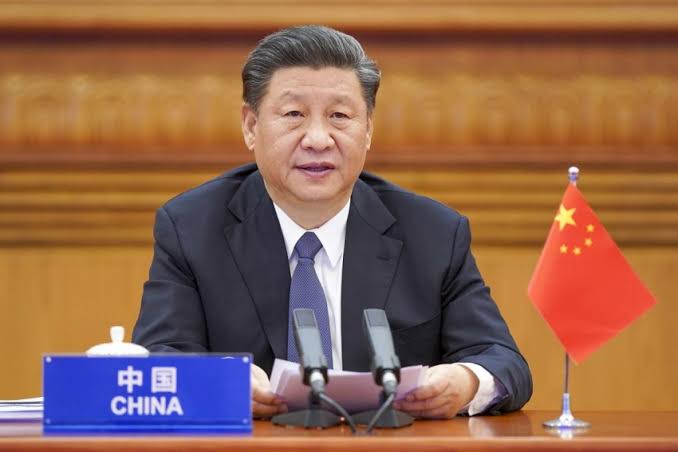
An interesting panel discussion took place last week titled, India and China: Uneasy Neighbours’. Some top panelists like Shivshankar Menon former NSA, Lt General SL Narasimhan, Director General, Centre for Contemporary China Studies, and Member, National Security Advisory Board, Government of India; and Yun Sun, Senior Fellow and Director of China Program, Stimson Centre, participated and the discussions were moderated by Gideon Rachman, Chief Foreign Affairs Commentator, Financial Times.[1]
Speaking on how the India-China stand-off in 2020 has put the relationship between the two countries in “crisis”, former National Security Advisor and former Ambassador to China, Shivshankar Menon, said that going back to old agreements would not bring back the trust and one has to wonder if the countries can achieve “a new equilibrium” after this. “….. — there have been talks, discussions and disengagement — but there are still points where tensions are there. I think our Army Chief said the other day that we have almost 50,000 troops along the Line of Actual Control (LAC). Let’s see when and how we actually get out of this. Saying we’ll restore the status quo is not the answer,” he said.
The panelists discussed the fraught relations between the two countries marked by an unresolved border dispute, how New Delhi is restricting Chinese investment and reducing economic dependence, Beijing’s growing political influence among India’s neighbours in the sub-continent, and how India is drawing closer to China’s strategic rivals, including the US.
Yun Sun said that one of the fundamental considerations in China’s relationship with India lies in India’s external environment and alignment choices, and most importantly, India’s relationship with the US. “When we look at their relations and the turbulence in the last couple of years, endogenous factors of that bilateral relationship have hardly changed, whether we look at the border, Tibet, Pakistan or the balance of power in South Asia. What has changed China’s position is what I call the exhaustion of external factors and the international environment. So, the Chinese would have believed that because of the Indo-Pacific strategy and the strategic value that the US is willing to attach to put India at its regional status, requires China to take certain actions to show India first that China will not be deterred or blackmailed, and that an alignment with the US will carry a certain cost,” she said.
However, Narasimhan and Menon both pointed out that the India-US relation has not been the only issue between India and China, and that tensions have been building up since 2012-13. “There is a risk of overestimating the US factor in India-China relations. My belief is that India-China relations are soui generis and self-driven. It is not a function of who’s in Washington or how Washington’s relations are with Beijing at any given moment of time, even though that’s the way most people tend to look at it, but India-China relations have their own timing, momentum and drivers,” said Menon
“It is one thing to say that India is getting closer to the US but each country does what it wants to do, that suits its requirement… China has gone much closer to Russia than what we would probably like. One can’t tell China or Russia to stop doing this. It is all individual countries’ own choices, and the way they look at their interests,” said Narasimhan.
Yun Sun also pointed out that from the Chinese perspective, China was believed to be in a “very dangerous and weakened position” internationally in 2020 because of the issue of the origin of the Covid-19 virus. It was blamed and held accountable for this since the beginning of the global pandemic, so it was in a particularly provocable state. “It has a direct impact over how Beijing reacted to the border dispute in Ladakh because it felt we are, maybe, being perceived as a troublemaker by the international community, and now it could not be perceived as conceding to India’s push along the border,” she said.
She also mentioned that China is trying in its own way to improve the relationship with India. “China is trying to back off a little bit from its contentious position last year in order to show that as the largest countries, we should still work together,” she said.
Conclusion and our take:
While talking about China a few things are important. One of them is Timing. In July the CCP is celebrating 100 years and a huge party event will be organised . It will not like anything negative to happen to its crafted image and Xi Jinping. Thus one could see certain statements and actions coming out of China recently. First it said that China needs to improve its image across the world. [2].
Recently President Xi Jinping said that China must improve the way it tells its “stories” to a global audience as it seeks an “international voice” that reflects the growing status of the world’s second-largest economy, the official news agency Xinhua reported. “We must pay attention to grasp the tone, be both open and confident but also modest and humble, and strive to create a credible, lovable and respectable image of China,” Xi said at a Communist Party study meeting, according to Xinhua. He added that it was crucial that China improve how it presented its narrative globally in order to “make friends.”
Second, the number of incursions in Taiwan have come down. [3]. TAIPEI — Chinese military activity in Taiwan’s air defense identification zone has dropped sharply since the U.S. and Japanese leaders called for peace and stability in the Taiwan Strait during their April 16 summit, data compiled by Nikkei shows.
Beijing appears to be backing off from aggressive moves that would antagonize Washington over the hot-button issue after the U.S. and Japan made their first statement naming Taiwan in decades. With China celebrating the Communist Party’s 100th anniversary on July 1, the country has also prioritized ensuring domestic order.
China had sent military jets into Taiwan’s air defense identification zone on 75 days between Jan. 1 and April 16, for a rate of about 70% or roughly five days weekly. A total of 257 jets, mainly J-10 and J-16 fighters, flew into Taiwan’s ADIZ during these incursions, for an average of 3.4 aircraft per day of incident.
China tends to increase flybys around Taiwan whenever Washington signals greater involvement with the island. A record 25 aircraft flew into the island’s ADIZ on April 12, four days before the statement, amid growing speculation that U.S. President Joe Biden and Japanese Prime Minister Yoshihide Suga would refer explicitly to Taiwan.
China’s posturing on April 12 also came one day after U.S. Secretary of State Antony Blinken’s warning that “it would be a serious mistake for anyone to try to change that status quo [on Taiwan] by force.”
Beijing’s activities near Taiwan diminished after the summit, both in scale and frequency. Su Tzu-yun, from Taiwan’s Institute of National Defense and Security Research, said the Biden-Suga statement had a clear impact. Since April 16, an average of 1.9 Chinese jets has entered Taiwan’s ADIZ per day of incursion. No incidents involving 10 or more aircraft have been reported.
Incursions have occurred in just seven of the past 14 days, with two aircraft involved on only one occasion. The other six days involved one plane each — including on June 4, when Blinken criticized China on the 32nd anniversary of the Tiananmen Square crackdown.
China wants to avoid antagonizing the U.S. over Taiwan, while demonstrating Beijing’s military might to those at home ahead of the Communist Party centennial, Su said, noting the recent uptick in provocations against Southeast Asian nations.
Sixteen Chinese military jets approached Malaysian territory on the island of Borneo on May 31. They shifted course once Malaysia scrambled its own aircraft in response.
Over 220 Chinese vessels have been moored by a reef in the Spratly Islands, which both China and the Philippines claim as their own, since March. The Philippines has slammed the presence of the ships in what the archipelago considers its exclusive economic zone.
The Biden administration announcing to investigate the Wuhan virus origins is another factor that is weighing down on the dragon.
The Quad initiative is also weighing down on China. Besides, the US decision to withdraw from Afghanistan in september will create additional pressure in the area. It must be noted that China has an issue with the Uighur muslims in its South west province which is closer to Afghanistan border. The chances of they getting support from across the border increases once US moves out is another factor that may be weighing upon China.
Finally the Corona Virus has made an impact on all world economies including China. China’s economy grew 0.6% in the first quarter of 2021 compared to the final quarter of 2020, below Bloomberg’s analyst growth forecast of 1.4% and the 2.6% growth between the third and fourth quarters of 2020. A spate of recent data suggests the economic benefits China won by moving quickly to contain COVID-19 and keep its factories open may now be wearing off. What’s more, Chinese consumers may not be spending enough to power a broad recovery.
Bo Zhuang, chief China economist at TS Lombard in Singapore, warns that China’s eye-catching export figure in the first quarter of this year belies underlying weakness.[4]
We believe that the sudden change in China’s tone and action is not out of charity. The dragon is taking a breather and fine tuning its strategies. It may continue or can suddenly stop the same depending upon its own conclusions. Some other news coming out from the border suggests that China has accumulated a large number of army on the Indian borders.
Overall the behavior of the dragon is always determined by internal and external environment and is always unpredictable. During the first 3- 4 years PM Modi tried his best to woo Xi with a personal touch of hospitality and other gestures. However that failed and we had the Galwan skirmishes.
India has now banned many items from China which may be furiating the dragon. India cannot afford to lower the guard and has to build up the pressure continuously. While having good relations with neighbours is always good, the current positioning of China does not allow much leeway for the same. India can only hope that the internal dimensions of that country makes it more sober and thoughtful going forward.
References:
[1] https://indianexpress.com/article/india/chinas-relationship-with-india-lies-in-indias-external-environment-7348860/
[2] https://www.nbcnews.com/news/world/xi-wants-make-china-more-lovable-around-world-he-may-n1269458
[3] http://samanvaya.org.in/trending/china-military-flybys-near-taiwan-plunge-after-us-japan-statement/
[4] https://fortune.com/2021/04/16/china-gdp-economy-2021-q1-recovery-losing-steam/
Dr. Asheesh Shah
Samanvaya.


